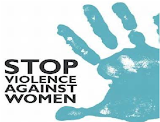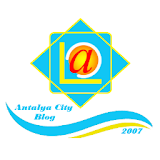The Beginnings of Integration after World War Two in Europe
If people look the political history of Europe, they will see wars between European countries. After Second World War, there was a destroyed Europe. Whole Europe had damaged or destroyed as financial, social and political. This war was the biggest one and it was bigger than First World War. In Second World War, millions of people were dead in Europe so Europeans wanted to stop these wars and permanent peace in Europe so providing peace between European states was very difficult.
In 20 September 1946, Winston Churchill made a special speech at the University of Zurich in Switzerland. According to Churchill, “The first step in the re-creation of the European Family must be a partnership between France and Germany. In this way only can France recover the moral and cultural leadership of Europe. There can be no revival of Europe without a spiritually great France and a spiritually great Germany. The structure of the United States of Europe, if well and truly built, will be such as to make the material strength of a single state less important. Small nations will count as much as large ones and gain their honor by their contribution to the common cause. The ancient states and principalities of Germany, freely joined together for mutual convenience in a federal system, might take their individual places among the United States of Europe.” This means that Europeans must build a kind of United States of Europe so this makes the speech very important because it was first signal of integration of Europe.
This speech became very effective on European countries and in 5 May 1949 the Council of Europe was established by treaty of London. Winston Churchill was a very important man for the process of integration of Europe but there were other actors for this process. They were German Prime Minister Konrad Adenauer, Italian Prime Minister Alcide de Gasperi, the Belgian Leader Paul Henry Spaak and French Foreign Minister Robert Schuman. There is no doubt that they are very important men for the integration process. There was also Jean Monnet who was known as the father of Europe. In 1950, Jean Monnet persuaded the French foreign minister Robert Schuman for declared a plan to a pooling of Europe` s coal and steel resources. In 1951, six countries signed the Treaty of Paris that establishes the European Coal and Steel Community. After that integration between European countries developed and now Europe has a strong union which is European Union.
European Communities after Second World War
After Second World War, European Integration started with establishment of the Council of Europe. Then this integration continued with establishment some communities in Europe. Firstly, the European Coal and Steel Community (ECSC) was established in 1951 by the Treaty of Paris signed by 6 countries which are France, Germany, Italy, Belgium, Luxembourg and the Netherlands. “At last, the Treaty establishing the European Coal and Steel Community was signed in Paris on 18 April 1951 and entered into force on 24 July 1952, with a validity period limited to 50 years. The Treaty expired on 23 July 2002. The common market advocated by the Treaty opened on 10 February 1953 for coal, iron ore and scrap and on 1 May 1953 for steel.” It created a common market for coal and steel so it would stop the war between European states and create integration between European states. Secondly, the European Defense Community (EDC) was established was signed on 27 May 1952. The European Defense Community was established against Soviet block. The EDC included West Germany, France, Italy, and the Benelux countries but it was not effective because it was high politics therefore too political and too controversial because of this, European powers decided to make low politics so they established the European Economic Community (EEC). “European Economic Community (EEC), organization established (1958) by a treaty signed in 1957 by Belgium, France, Italy, Luxembourg, the Netherlands, and West Germany (now Germany); it was known informally as the Common Market. The EEC was the most significant of the three treaty organizations that were consolidated in 1967 to form the European Community (EC; known since the ratification [1993] of the Maastricht treaty as the European Union). The EEC had as its aim the eventual economic union of its member nations, ultimately leading to political union. It worked for the free movement of labor and capital, the abolition of trusts and cartels, and the development of joint and reciprocal policies on labor, social welfare, agriculture, transport, and foreign trade.”
As a result, all of these communities make a formation. European Union existed with this formation so all of these communities and their processes are very important.
http://www.ellopos.net/politics/churchill-europe.asp?pg=3
http://europa.eu/scadplus/treaties/ecsc_en.htm
http://www.infoplease.com/ce6/history/A0817889.html
Pinder, J., European Community: The Building of a Union. New York: Opus, 1995
































